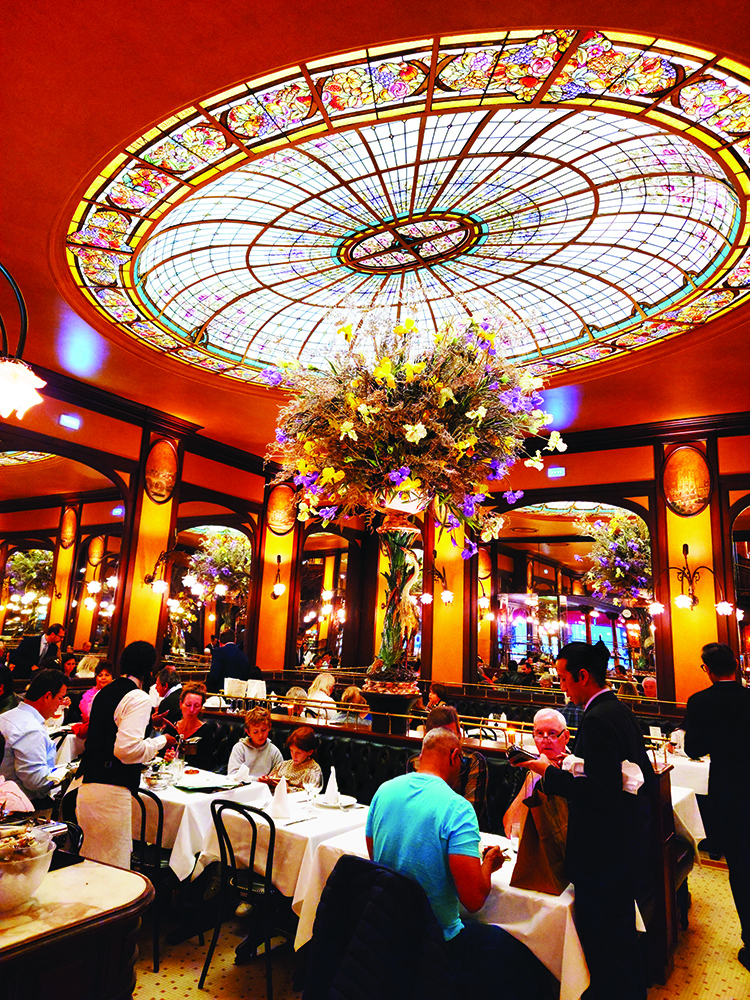 I’ve been to France many times but never in the late autumn. After one sweltering and crowded summer trip to Paris, I avoided the high prices and huge tourist crowds as much as possible. Business trips could vary, but April was my best bet for vacation.
I’ve been to France many times but never in the late autumn. After one sweltering and crowded summer trip to Paris, I avoided the high prices and huge tourist crowds as much as possible. Business trips could vary, but April was my best bet for vacation.
In October, I was invited to a book launch by my friend, Adrien Motel. He had written a book about the legendary French Ocean Liner Normandie, which was to debut at a 1930s-themed black-tie dinner. The event was phenomenal, and October is my new favorite month to go to Paris.
I stayed at an almost fairytale-like hotel in the Place des Voges. It was covered in ancient vines that had turned a bright red as the season had started to change. The mornings were crisp, and it made walking a joy.
On my last evening, I headed towards the Place de la Bastille, just a few blocks away. The square is known not only for its place in the French Revolution but is now the site of Paris’s (newer) Opera House.
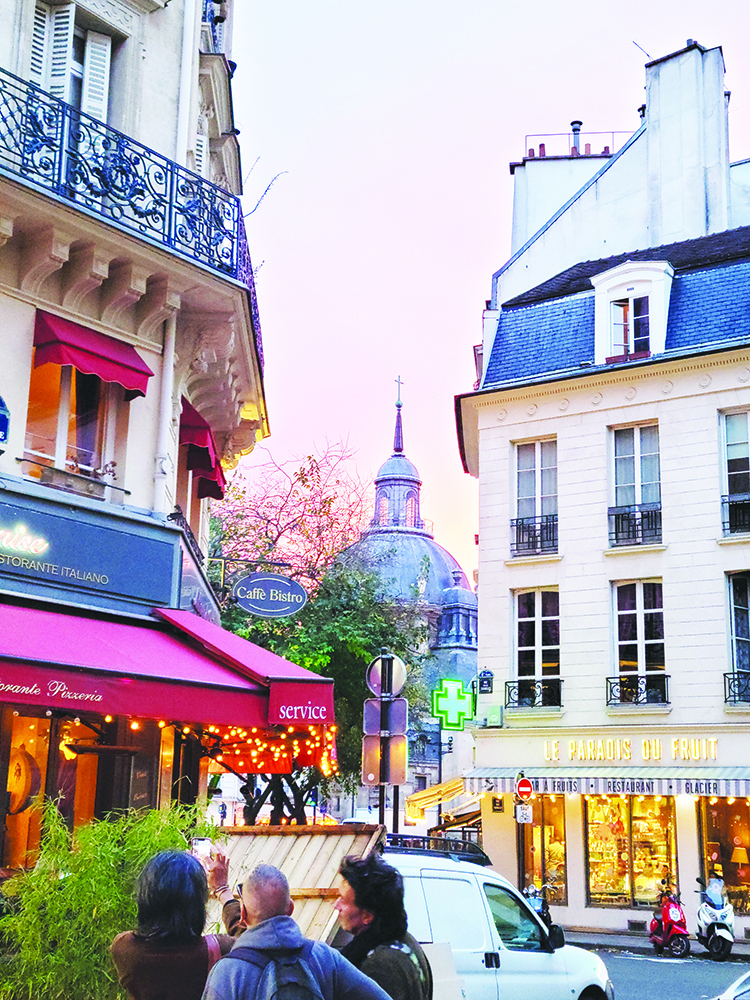 Turning off the main boulevard, I saw a short street filled with restaurants and cafés. One place caught my eye as it had a long row of scarlet awnings with a gold letter “B.”
Turning off the main boulevard, I saw a short street filled with restaurants and cafés. One place caught my eye as it had a long row of scarlet awnings with a gold letter “B.”
I had accidentally stumbled upon one of Paris’s oldest and most famous brasseries. – As I found out later, famous enough that in 1981 Francois Mitterrand reserved the entire first floor of the restaurant to celebrate his election victory as the new French President.
First, a word of warning… In France, there is a strong delineation between what we Americans lump into the term “restaurants.” A French café will offer coffee and a limited menu of snacks. A bistro will offer a limited menu focused on home-style meals (think most of the classics,) and a brasserie will have a much more extensive menu and traditionally have a connection with beer. (Indeed, the French word for brewery is “brasserie.”)
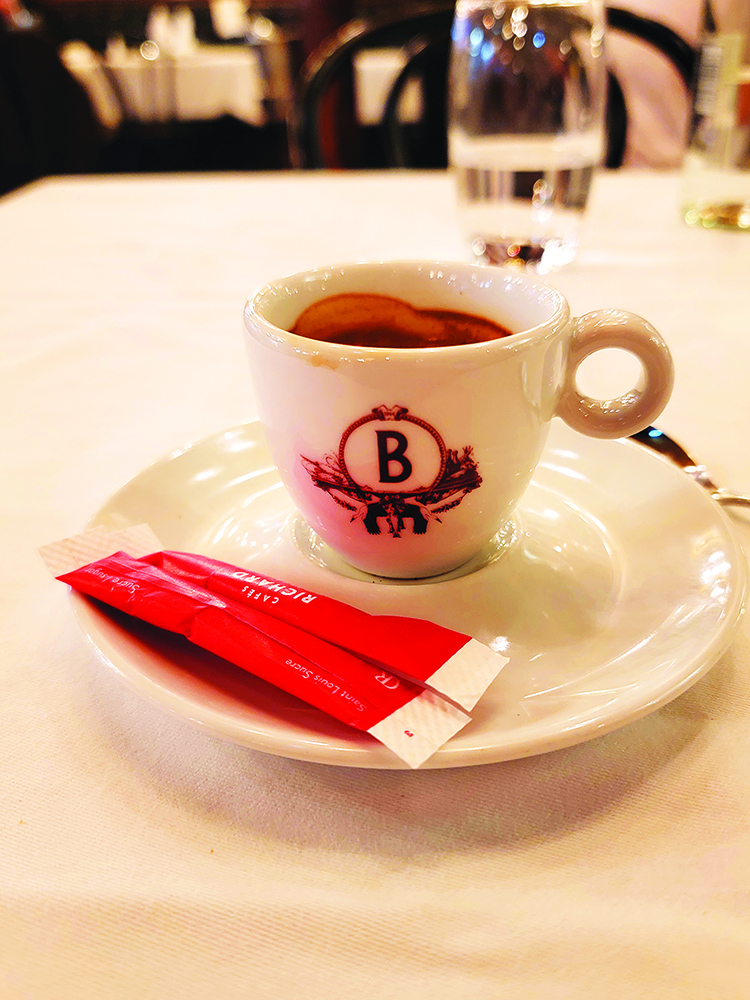 My confusion as to why I would not find Coq au Vin or Beef Bourguignon in a French “restaurant” was settled by my French teacher years ago. I was told that “In France, “restaurants” … are for art.”
My confusion as to why I would not find Coq au Vin or Beef Bourguignon in a French “restaurant” was settled by my French teacher years ago. I was told that “In France, “restaurants” … are for art.”
Frederic Bofinger came to Paris from the northeastern French region of Alsace. In 1864 he established a modest business with a strong focus on beer. He initially catered to the large population of Alsatian workers in the nearby Place de la Bastille.
The Alsace is renowned for great French food but also has a German influence. You can still see this connection in the presence of several sausage dishes and even sauerkraut on the menu.
Over the course of decades, Bofinger expanded, and in 1919, the brasserie was refurbished in the stunning Belle Epoch style. The gorgeous Art Nouveau domed glass ceiling, elaborate ironworks, and beveled mirrors today are much as they were over 100 years ago.
The menu is extensive and contains so many classics that deciding on dinner took a while.
There is a large selection of fresh seafood, and, a bit unusually, Bofinger does a tremendous business in takeaway fruit-de-Mer (cold seafood).
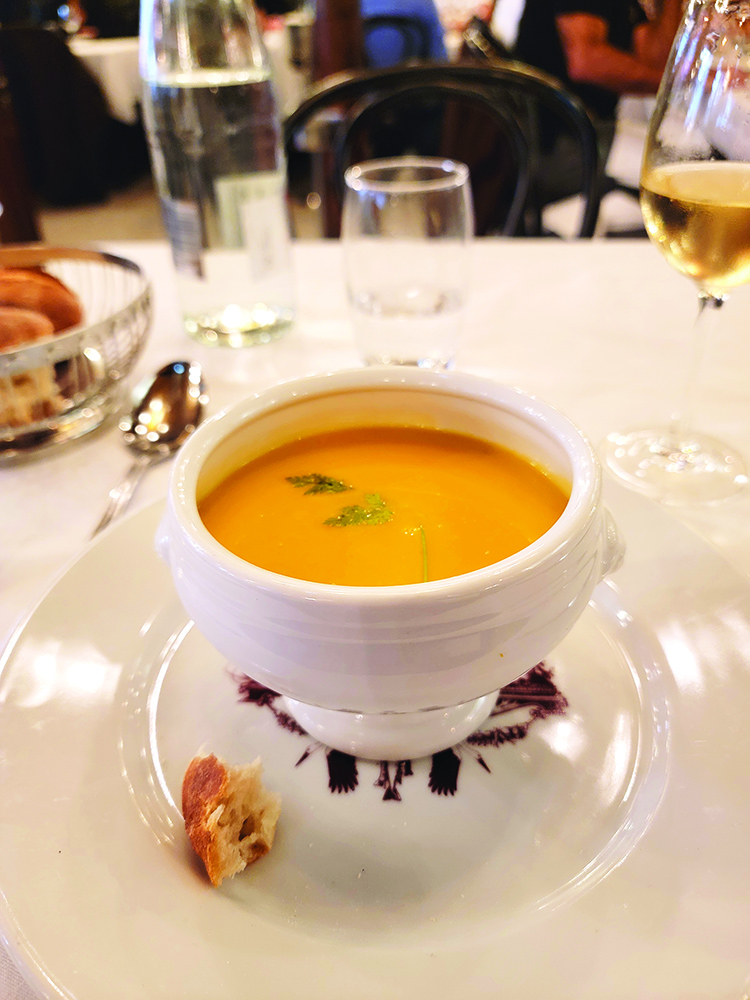 The menu features four prestigious varieties of oysters (Brittany Cadoret, Saint-Vaast le Tatihou, Fines de Claire, and Galarneau from Bourcefranc-le-Chapus near La Rochelle), each with a family story almost as old as the restaurant itself. “Shrimp” is listed by the desired size: shrimp, (larger) prawns, and (larger still) langoustines. French Crabs, welks, and clams are available alongside Canadian lobsters. All the above can be mixed and matched on various towering fruit-de-Mer platters.
The menu features four prestigious varieties of oysters (Brittany Cadoret, Saint-Vaast le Tatihou, Fines de Claire, and Galarneau from Bourcefranc-le-Chapus near La Rochelle), each with a family story almost as old as the restaurant itself. “Shrimp” is listed by the desired size: shrimp, (larger) prawns, and (larger still) langoustines. French Crabs, welks, and clams are available alongside Canadian lobsters. All the above can be mixed and matched on various towering fruit-de-Mer platters.
There are many starters, from soups to escargot to foie gras and numerous seafood mains. I was impressed by the fantastic selection of “Meat” courses, including; Supremes of Chicken with Riesling, Normandie Beef Tartare, and Grilled Beef Tenderloin with béarnaise sauce and fries.
In keeping with its Alsatian roots, there is a Sauerkraut selection including a frankfurter, Jura sausage, smoked bacon, salt pork chop; also, one called a “Sea Sauerkraut” that includes haddock, salmon, langoustines, and boiled potatoes.” Their cabbage is homemade according to tradition: candied onions with lard, juniper, coriander, and cumin.
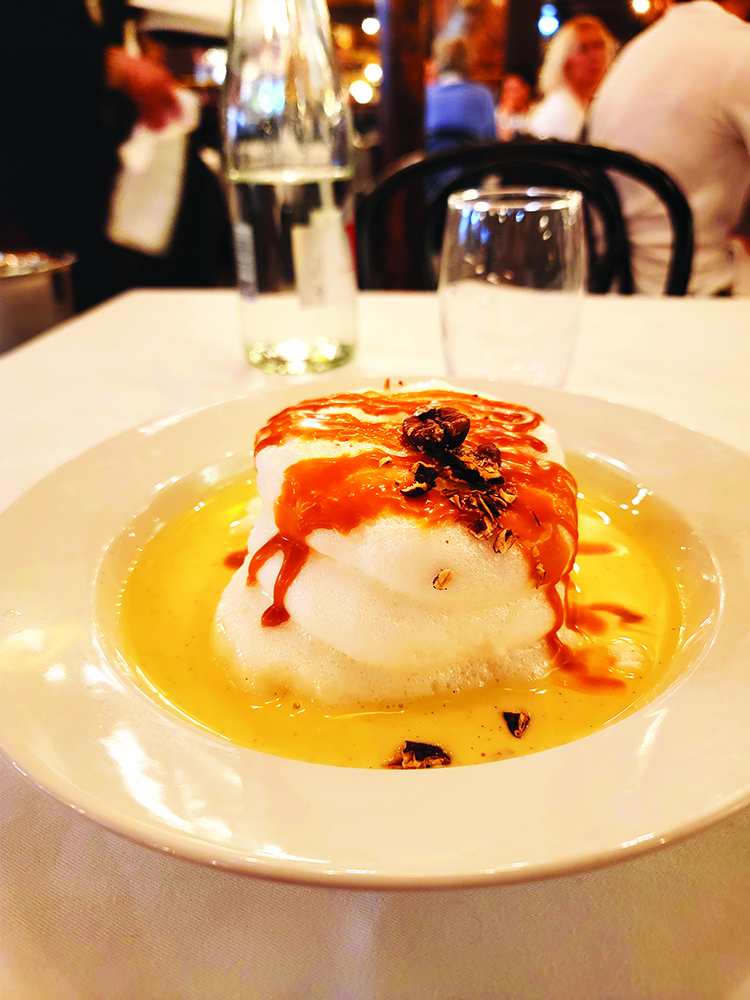 To me, this was a menu of French food fantasies. (Not knocking “art,” but this was a dream menu)
To me, this was a menu of French food fantasies. (Not knocking “art,” but this was a dream menu)
I opted for one of the fixed-price dinners, which allowed me a starter, a main, and dessert for only 35 Euros!
I started with a silky Butternut Velouté followed by a roast chicken breast with a spiral of whipped potatoes and the most delicious (chicken) brown sauce I’ve ever tasted. It had deep flavor, with perfect fat content and perfect seasoning. (A baguette was all that was needed to dispatch the sauce completely.) Unlike myself, I ate the meal slowly to enjoy each bite.
My dessert was a picture-perfect “Floating Island.” A substantial baked meringue was floating on a pool of vanilla Crème Anglaise. It was drizzled conservatively (and correctly) with caramel and topped with chopped pecans. I enjoyed the meal with a 2020 Georges Burrier Pouilly-Fuissé.
Not wanting to leave, I treated myself to a late-day espresso.
I shared the last bit of my wine with two lovely ladies visiting from San Francisco. One of them had just attended an early opera at the Bastille nearby. We marveled at the stained-glass dome and our luck for having been able to dine at such a beautiful spot.
Walking back to the ‘Pavilion de la Reine,’ I was treated to the most beautiful pink and purple Paris sky. Life was good.
Richard Arebalo
OTL Features Editor